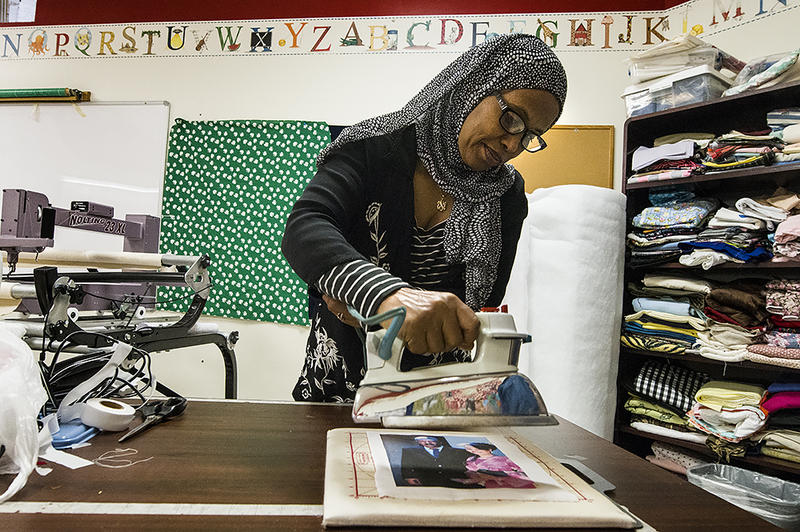How KCUR helps ‘soccer dads’ care about the arts in Kansas City
C.J. Janovy, Briana O'Higgins, KCUR,This is a series on Better News to a) showcase innovative/experimental ideas that emerge from the Knight-Lenfest Newsroom Initiative and b) to share replicable tactics that benefit the news industry as a whole. This “win” comes from C.J. Janovy, digital managing editor, and Briana O’Higgins, digital director, at KCUR in Kansas City. KCUR participated in the Poynter Institute’s Local News Innovation Program in 2018-19.
You can also hear all about it on the It’s All Journalism podcast.
Question: What problem were you trying to solve, and why was solving the problem strategically important for your organization?
Answer: With top-tier museums and performing arts organizations, key arts-education institutions and a robust street-level creative scene, Kansas City has a thriving arts community. In response to what was happening in our city, KCUR made significant efforts to expand its arts coverage — from 2014 to 2018, the station even had two full-time arts reporters. When one of those reporters moved to a different position, we made up for the loss by developing a strong stable of arts freelancers. In short, we spent a lot of time publishing a lot of arts stories.
But web traffic for those stories suggested that either KCUR.org readers weren’t as excited about the arts as people in Kansas City like to say they are, or our stories weren’t reaching enough of them.
Because our strategic priorities included identifying potential audiences that offer substantial opportunity for growth and developing strategies to engage them, our arts vertical was a perfect place to test what we’d learned in our Table Stakes workshop at Poynter.
Q: How is this approach related to Table Stakes (e.g. one of the 7 Table Stakes and/or an outgrowth of the Knight-Lenfest initiative, etc.)?
A: This approach is related to Table Stake No. 1 (Serve targeted audiences with targeted content) and Table Stake No. 2 (Publish on platforms used by your targeted audiences).
Q: How did you go about solving the problem?
A: We analyzed two years’ worth of page views for all of our arts stories, paying particular attention to the top 20 stories and the bottom 20.
Clear patterns emerged immediately. Most of the stories in the top 20 could be described as either “breaking arts news” or were features about people and had little to do with upcoming arts events. (Stories in the bottom 20 were mostly poorly executed attempts to repackage a five-minute weekly talk show segment about local bands, which we’d already stopped doing a few months earlier.)
The top 20 data led to an epiphany. Previously, it made sense to us as journalists that arts-beat coverage would be primarily calendar-driven. We figured readers wanted to know what events to attend, and why, for the upcoming weekend. But the themes we saw in the top 20 stories told us readers were more interested in something a bit different:
- Arts news that people can use (i.e., “What You Need to Know About Open Spaces, Kansas City’s Huge New Arts Festival”)
- An experience of an event they would never attend themselves (i.e., “At This Kansas City Art Space, Loitering Is Both Subversive and Neighborly”)
- An online experience they wouldn’t have anywhere else (i.e., “Here’s a Sneak Peek Inside Kansas City’s 21c Museum Hotel”)
- A surprising story nobody else has (i.e., “At Night, This Mild-Mannered Johnson County Father Is a Hard-Rock Star”)
- An arts idea as a way to understand our city in the moment (i.e., “For Refugees Who’ve Made New Homes in Kansas City, Quilts Are a Universal Language”)

From the Sept. 7 story, “At Night, This Mild-Mannered Johnson County Father Is A Hard-Rock Star.” (William Burkle Photography)

From the Jan. 29, 2018 story, “For Refugees Who’ve Made New Homes In Kansas City, Quilts Are A Universal Language.” (Photo: Julie Denesha)

From the Aug. 16 story, “Kansas City Musician Deems Herself ‘Goddess Of Groove,’ Blues World Seems To Agree” (Photo: HeatherNewmanBand.com)
To refocus attention on our readers, arts reporters and editors went through an audience-visioning process (page 4 of NPR’s Project Blueprint document). We’d been introduced to the process at an NPR training initiative. We later looked through project planning documents from a range of news and public media outlets to develop a process that worked for KCUR.
We ultimately envisioned several types of readers who aren’t directly involved in the arts, which is how we began to think of readers such as a busy father of active girls with many interests — a guy we now call “soccer dad.”
We reframed our approach to arts stories to appeal to these newly envisioned readers. We still report on upcoming performances, art openings, events, etc., but we are much more intentional about how we tell those stories.
In terms of social media strategy, our arts stories, along with nearly every other story published by the content team at KCUR, are published as story links to KCUR’s Facebook and Twitter accounts.
Because they are often reported with compelling visuals, arts stories are more likely than stories from other beats to be translated for Instagram. (We have done some highly produced video arts stories for social media, but the engagement was not impressive, likely because of the length. Those experiments occurred more than three years ago, so we should probably revisit the idea now that video dominates the social media space.)
About 18 months ago, we killed an unsuccessful weekly arts email because of dwindling open rates and subscribers. At the end of Table Stakes, we used what we learned about our audiences and arts reporting to build a new, limited-run arts-related email newsletter. This “arts adventure” email was essentially a list of related arts events based on a particular theme. It ran once a week for summer 2019 and was a wild success, gaining more than 3,000 subscribers in less than a month. At the conclusion of the limited run, we surveyed subscribers and learned there was great interest in continuing the email.
We often host arts-related events and have an event series based in the arts. Our young listeners group, KCUR Generation Listen, has two music series at breweries, showcasing local musicians in NPR Tiny Desk-style performances. In addition, the group’s Podcast Party series often includes musicians, poets and other performing artists.
Q: What worked?
A: We set traffic goals, focusing on page views:
- At least 25% of our posts would get more than 2,000 page views.
- Fewer than 33% of our posts would get fewer than 500 page views.
Over four months, we exceeded those goals:
- At least 29% of our posts got more than 2,000 page views.
- Fewer than 29% of our posts performed lower than the low benchmark.
And since we began, our highest-performing posts have earned significantly more than 2,000 page views, often in the 3,000-5,000 range or higher, such as “Kansas City Musician Deems Herself ‘Goddess of Groove,’ Blues World Seems to Agree,” which clocked more than 9,600, and “Kansas City’s Tivoli Theater Gets a Hollywood Ending, Will Re-Open at the Nelson-Atkins Museum,” which surpassed 20,000.
Q: What didn’t work?
A: Stories involving key areas of arts coverage continue to underperform — specifically, dance, classical music, opera and theater. We’re not entirely certain why, but one theory is that classical arts take more time to understand and appreciate. So these art forms might be a bit alienating for the younger readers in our online audience. Meanwhile, the audiences that are more interested in these art forms might not be as inclined to connect with stories about them online. So we are being more deliberate about what stories to report in these areas, and we’re being more thoughtful about how we frame them.
Q: What happened that you didn’t expect?
A: We were surprised by the high level of interest in what might be called “arts real-estate development stories” — for example, a story about the construction of a new facility for a local university’s musical conservatory, or the half-million-dollar rehab of a well-known but empty historic mansion near one of the major art museums. That suggests that our readers might appreciate more coverage of the local built environment if that coverage includes human stories.
Q: What would you do differently now? What did you learn?
A: This isn’t about what we would do differently if we were to re-do the project, but here’s a public radio reality that the project data reinforced: When a radio reporter produces a beautiful, sound-rich audio feature, the digital version will likely need to be completely reconceived. Regardless of how great the script is, it’ll need to be rewritten for readers rather than listeners.
For example, we knew “The ‘Trippy, Humongous’ Sounds From This Young Man’s Band Might Loosen Up Kansas City Jazz” was good radio, and we weren’t surprised when the written version’s page views stalled out at around 680. We were pleasantly surprised when “There’s a Soundtrack for Kansas City’s Nelson-Atkins Sculpture Park, and It’s on Your Phone” made it to 1,113 — great artwork and a good headline helped a story that was all about sound.
Q: What advice would you give to others who try to do this?
A: Don’t try to second-guess the data (in this case, the top 20 and bottom 20 stories from two years’ worth of stories). If it repeatedly gives you the same message, listen.
Q: Anything else you want to share about this initiative?
A: Don’t be disappointed when stories you’re confident are going to get massive numbers of page views turn out to be duds (one example: “This Missouri Wine Maker Stomps More Than Grapes When He Puts on Pro Wrestling Garb”). Just keep learning from the experience. The next day, it’s easy to see how that thing you thought you were doing right at the time could have been better.